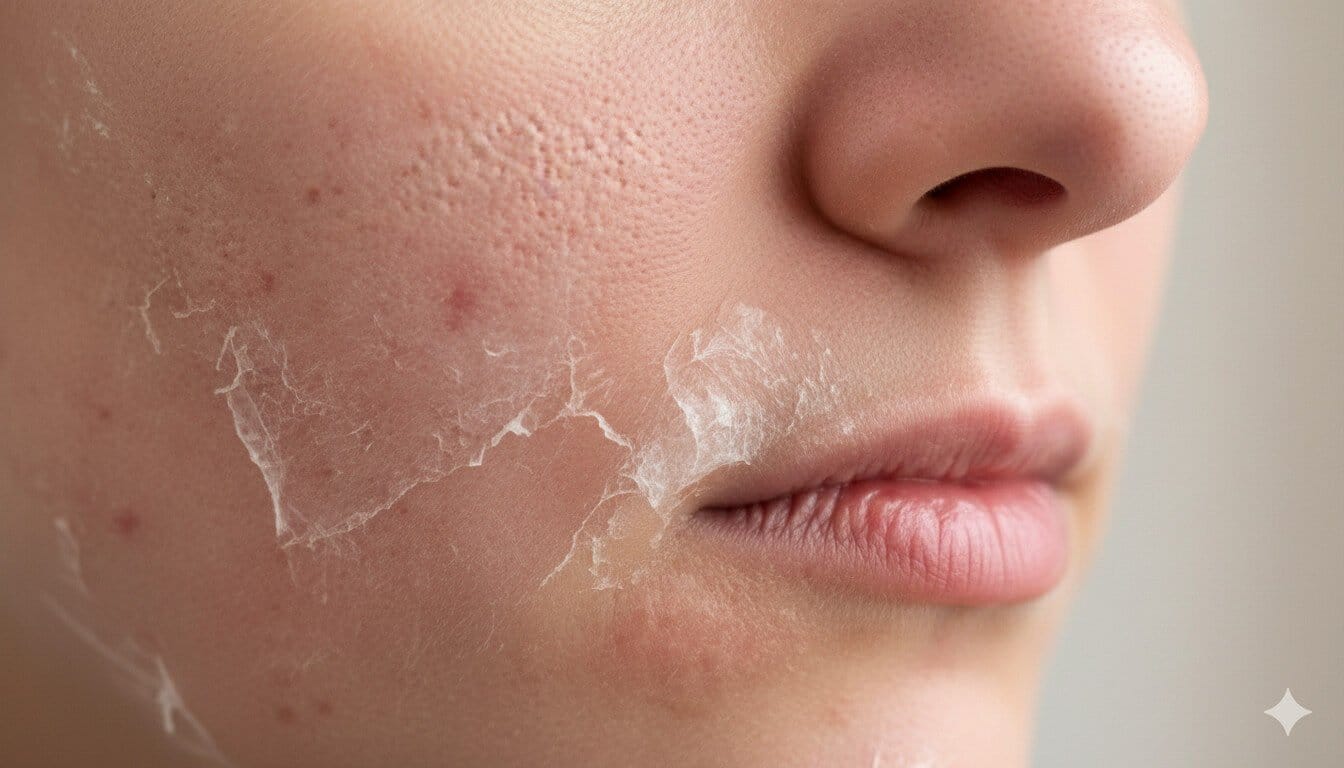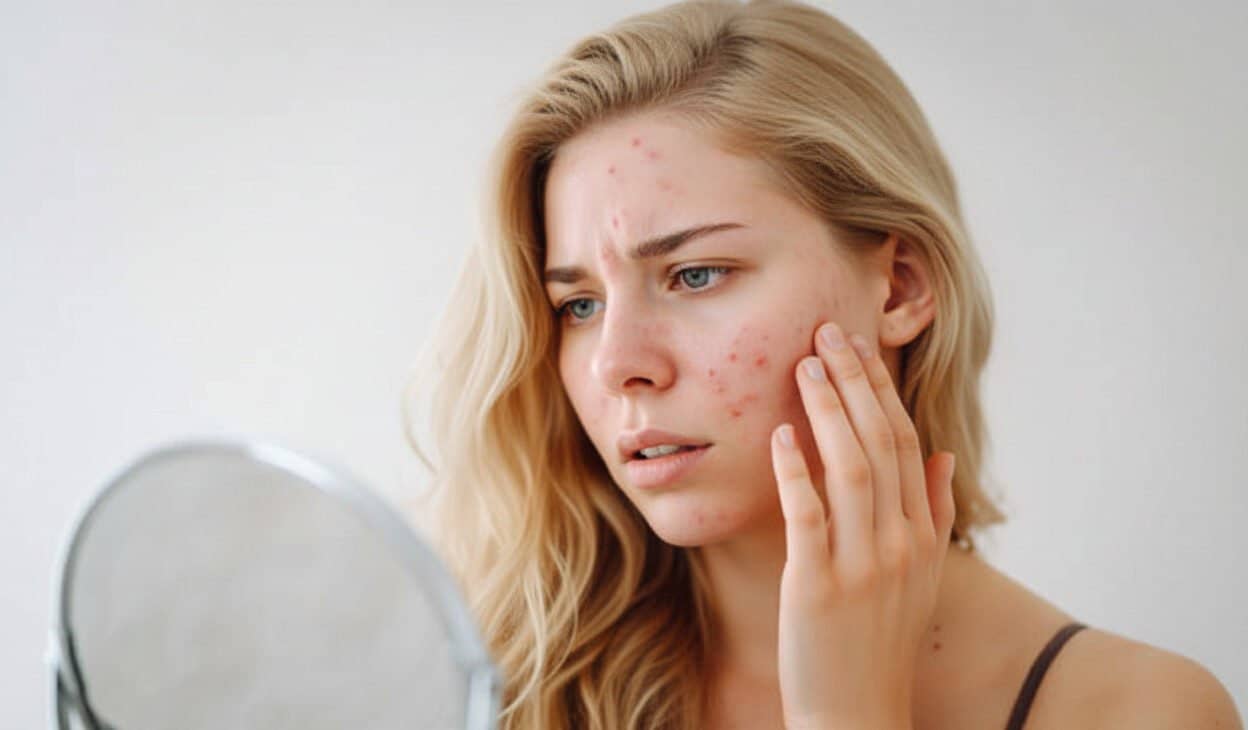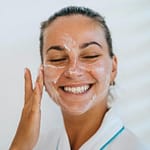How to Treat Acne Papules Effectively?

- Tips
- Tip 1: Cleanse Gently Twice Daily
- Tip 2: Use Salicylic Acid Treatments
- Tip 3: Apply Benzoyl Peroxide Sparingly
- Tip 4: Moisturize Daily
- Tip 5: Avoid Picking or Squeezing Papules
- Tip 6: Use Non-Comedogenic Products
- Tip 7: Exfoliate Gently
- Tip 8: Apply a Clay Mask Weekly
- Tip 9: Use Sunscreen Daily
- Tip 10: Eat an Anti-Inflammatory Diet
- Tip 11: Manage Stress
- Tip 12: Change Pillowcases Regularly
- Tip 13: Cleanse After Sweating
- Tip 14: Use a Retinol Product
- Tip 15: Get Enough Sleep
- Importance
- How to Solve this issue?
- Brand Products to Use
- Natural Remedies
- FAQs
Acne papules, those red, inflamed bumps on your skin, can be a real confidence killer. Unlike blackheads or whiteheads, papules are tender, raised spots without a visible head, caused by clogged pores and inflammation. They often appear on the face, back, or chest, making you feel self-conscious. The good news? You can treat acne papules effectively with simple, natural methods and the right products. In this article, we’ll share 15 proven tips to reduce inflammation, clear papules, and prevent future breakouts. From daily skincare routines to home remedies and dermatologist-recommended products, these strategies work for all skin types. Plus, we’ll answer common questions to help you understand and manage papules. Whether you’re battling a few bumps or persistent acne, this guide will help you achieve clearer, healthier skin. Let’s dive in and tackle those papules!
Tips
Tip 1: Cleanse Gently Twice Daily
Dirt, oil, and bacteria clog pores, worsening acne papules. Harsh cleansing, however, can irritate skin and increase inflammation. Fix it: Wash your face morning and night with a gentle, non-comedogenic cleanser. Massage for 30–60 seconds, focusing on papule-prone areas like the cheeks or chin. Rinse with lukewarm water to avoid drying out your skin, which can trigger more oil production. For example, this routine reduces bacteria and keeps pores clear without aggravating papules.
Tip 2: Use Salicylic Acid Treatments
Salicylic acid reduces inflammation and unclogs pores by dissolving oil and dead skin. It’s ideal for treating papules but can dry skin if overused. Fix it: Apply a 1–2% salicylic acid serum or gel 2–3 times a week after cleansing. Use a small amount on affected areas and follow with a moisturizer. This helps calm papules and prevents new ones from forming.
Tip 3: Apply Benzoyl Peroxide Sparingly
Benzoyl peroxide kills acne-causing bacteria and reduces inflammation in papules. However, it can cause dryness or peeling if overapplied. Fix it: Use a 2.5–5% benzoyl peroxide spot treatment once daily, preferably at night, on papules only. Start with a small amount and moisturize to minimize irritation. This targets bacteria effectively while soothing inflamed bumps.
Tip 4: Moisturize Daily
Dry skin can worsen inflammation, making papules more noticeable. Skipping moisturizer, even for oily skin, leads to excess oil production. Fix it: Apply a lightweight, non-comedogenic moisturizer morning and night after cleansing. Look for ingredients like hyaluronic acid or ceramides to hydrate without clogging pores. This keeps skin balanced and reduces papule irritation.
Tip 5: Avoid Picking or Squeezing Papules
Picking papules pushes bacteria deeper, worsening inflammation and risking scars. It’s tempting but harmful. Fix it: Leave papules alone and use treatments like salicylic acid or benzoyl peroxide. If you need removal, visit a dermatologist for professional extraction. For instance, this prevents scarring and speeds up healing.
Tip 6: Use Non-Comedogenic Products
Heavy makeup or creams clog pores, aggravating papules. Non-comedogenic products prevent this issue. Fix it: Choose oil-free moisturizers, sunscreens, and makeup labeled “non-comedogenic” or “for acne-prone skin.” Apply thinly after cleansing to hydrate without blocking pores, reducing the risk of new papules.
Tip 7: Exfoliate Gently
Dead skin cells contribute to clogged pores, fueling papules. Over-exfoliating, though, can irritate inflamed skin. Fix it: Exfoliate 1–2 times a week with a gentle chemical exfoliant, like salicylic acid, or a mild scrub. Apply for 30 seconds, rinse thoroughly, and moisturize. This clears debris without worsening papule inflammation.
Tip 8: Apply a Clay Mask Weekly
Clay masks absorb excess oil and reduce inflammation, helping shrink papules. Overuse can dry skin, so moderation is key. Fix it: Use a kaolin or bentonite clay mask once a week for 10–15 minutes on affected areas. Rinse with lukewarm water and moisturize. This draws out impurities and calms inflamed skin.
Tip 9: Use Sunscreen Daily
Sun exposure worsens inflammation and can darken papule scars. Skipping sunscreen leaves skin vulnerable. Fix it: Apply a broad-spectrum, non-comedogenic sunscreen (SPF 30+) every morning, even indoors. Reapply every 2 hours if outside. For example, this protects skin and prevents papule-related discoloration.
Tip 10: Eat an Anti-Inflammatory Diet
Sugary or processed foods can trigger inflammation, worsening papules. A poor diet also lacks skin-supporting nutrients. Fix it: Eat fruits, vegetables, lean proteins, and omega-3-rich foods like salmon. Drink 2–3 liters of water daily to flush toxins. This reduces inflammation and supports clearer skin.
Tip 11: Manage Stress
Stress increases cortisol, which boosts oil production and inflammation, aggravating papules. Fix it: Practice stress-relief techniques like deep breathing, meditation, or yoga for 5–10 minutes daily. Additionally, a short walk or journaling can calm your mind, helping reduce papule flare-ups.
Tip 12: Change Pillowcases Regularly
Pillowcases trap oil, bacteria, and dead skin, which transfer to your face during sleep, worsening papules. Fix it: Wash pillowcases weekly with a gentle detergent. Use cotton or silk cases to minimize irritation. This simple step reduces bacteria and keeps skin clearer.
Tip 13: Cleanse After Sweating
Sweat mixes with oil and bacteria, clogging pores and inflaming papules after exercise or heat. Fix it: Wash your face with a gentle cleanser within 10–15 minutes after sweating. Pat dry and moisturize to prevent pore clogging, especially in papule-prone areas.
Tip 14: Use a Retinol Product
Retinol speeds up cell turnover, preventing clogged pores and reducing papule formation. It can irritate if overused, though. Fix it: Apply a low-strength retinol (0.25–0.5%) 2–3 nights a week after cleansing. Follow with moisturizer and use sunscreen daily, as retinol increases sun sensitivity.
Tip 15: Get Enough Sleep
Lack of sleep spikes stress hormones, increasing oil production and papule inflammation. Fix it: Aim for 7–8 hours of sleep nightly. Use a silk pillowcase and a calming bedtime routine, like reading or meditation, to improve sleep quality and support skin healing.
Importance
What Are Acne Papules?
Acne papules are small, red, inflamed bumps caused by clogged pores filled with oil, dead skin, and bacteria. Unlike whiteheads, they lack a visible head and feel tender due to inflammation. They often appear on the face, back, or chest and can lead to scarring if mishandled. Factors like excess oil, stress, or poor skincare worsen them.
Why These Tips Work
These tips target papules by reducing inflammation, clearing pores, and preventing bacterial buildup. For instance, cleansing and exfoliation remove oil and debris, while salicylic acid and benzoyl peroxide fight bacteria and clogs. Clay masks and retinol keep pores clear, and diet and sleep reduce triggers like inflammation. Therefore, this multi-step approach tackles papules effectively.
Benefits of Treating Papules
Treating papules not only clears bumps but also prevents scarring and improves skin texture. Regular care reduces redness, shrinks pores, and lowers acne risk. Moreover, these gentle, natural methods suit oily, sensitive, or combination skin, offering a safe way to achieve clearer skin without harsh treatments.
How to Solve this issue?
Daily Skincare Routine
Wash your face twice daily with a gentle, non-comedogenic cleanser. Massage for 30–60 seconds on papule-prone areas and rinse with lukewarm water. Apply a lightweight moisturizer and SPF 30+ sunscreen every morning. Use a salicylic acid treatment 2–3 times a week at night, followed by moisturizer. This keeps pores clean and reduces inflammation.
Weekly Treatments
Exfoliate 1–2 times a week with a mild salicylic acid product. Apply for 30 seconds, rinse, and moisturize. Use a clay mask weekly for 10–15 minutes to absorb oil, followed by moisturizer. Apply retinol 2–3 nights a week, starting slowly to avoid irritation. These steps clear clogs and calm papules.
Lifestyle and Post-Sweat Care
Cleanse within 10–15 minutes after sweating to prevent pore clogging. Change pillowcases weekly and sleep 7–8 hours nightly. Eat anti-inflammatory foods like berries and fish, and drink 2–3 liters of water daily. Practice stress relief like meditation for 5–10 minutes daily to reduce flare-ups.
Consistency and Professional Help
Follow this routine for 4–6 weeks to see fewer papules. Avoid picking to prevent scars. If papules persist, consult a dermatologist for treatments like prescription retinoids. Consistency is key for lasting, clearer skin.
Brand Products to Use
These affordable products help treat acne papules effectively:
- CeraVe Foaming Facial Cleanser ($10–15): A gentle cleanser with ceramides for acne-prone skin. Use twice daily to clean pores without irritation.
- Paula’s Choice Skin Perfecting 2% BHA Gel ($25–35): A salicylic acid treatment to unclog pores. Apply 2–3 times a week after cleansing.
- Neutrogena On-the-Spot Acne Treatment ($7–10): A 2.5% benzoyl peroxide spot treatment. Use once daily on papules, followed by moisturizer.
- La Roche-Posay Effaclar Adapalene Gel 0.1% ($30–35): A gentle retinol for pore clearing. Apply 2–3 nights a week with moisturizer.
- Cetaphil Oil-Free Moisturizer ($10–15): A lightweight moisturizer with niacinamide. Apply daily to hydrate without clogging pores.
- EltaMD UV Clear SPF 46 ($30–40): A non-comedogenic sunscreen for daily protection. Apply every morning to shield papules.
How to Choose: Pick products for your skin type or gel-based for oily, cream-based for dry. Test on a small patch first. Follow instructions, and start retinol or benzoyl peroxide slowly to avoid irritation. Consult a dermatologist if needed.
Natural Remedies
Try these home remedies to reduce papules naturally:
- Tea Tree Oil: Dilute 2–3 drops with a teaspoon of water. Dab on papules, leave for 10 minutes, and rinse. Use 2–3 times a week to reduce bacteria and inflammation.
- Aloe Vera Gel: Apply fresh aloe vera gel to papules, leave for 15 minutes, and rinse. Use daily to soothe inflammation and hydrate skin.
- Green Tea Rinse: Brew green tea, cool it, and apply with a cotton pad after cleansing. Leave for 5 minutes, then rinse. Use 2–3 times a week to calm redness.
- Honey Mask: Apply raw honey to papules for 15 minutes, then rinse. Use weekly to fight bacteria and reduce inflammation.
- Turmeric Paste: Mix 1 teaspoon turmeric with water to form a paste. Apply to papules for 10 minutes, then rinse. Use once a week to reduce swelling.
Caution: Test remedies on a small patch to avoid irritation. Avoid if allergic. Use alongside your routine for best results.
FAQs
How long does it take to treat acne papules?
With consistent care, papules reduce in 2–4 weeks. Severe cases may take 6–8 weeks to clear fully.
Can picking papules cause scars?
Yes, picking worsens inflammation and risks permanent scarring. Use treatments like salicylic acid instead.
Is benzoyl peroxide safe for sensitive skin?
It can irritate sensitive skin. Start with 2.5% strength, use sparingly, and moisturize well.
Does diet affect papules?
Yes, sugary foods increase inflammation. Eat anti-inflammatory foods like fruits and fish for clearer skin.
Can stress worsen papules?
Stress boosts oil production and inflammation, aggravating papules. Daily stress relief like meditation helps.
Are natural remedies enough for papules?
They reduce inflammation but work best with cleansing and treatments like retinol for faster results.
When should I see a dermatologist?
If papules persist after 6–8 weeks or worsen, consult a dermatologist for prescription treatments.
Subscribe to our newsletter!






